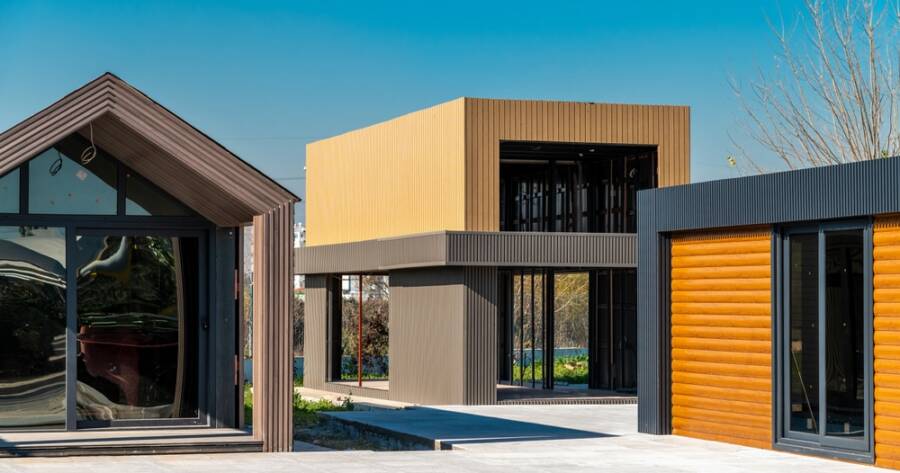Securing affordable housing is becoming increasingly difficult. Rising construction expenses, prolonged building schedules, and a shortage of suitable options make finding the right home a challenge. However, on-demand prefabricated homes are transforming the industry by delivering a faster, more cost-effective, and eco-friendly alternative. As housing demand continues to grow, this groundbreaking solution is playing a crucial role in shaping the future of accessible living.
What Are On-Demand Prefabricated Homes?
Prefabricated homes, also known as prefab homes, are built in factories before being transported to their final location. Unlike traditional homes, which require months of on-site construction, prefab homes are assembled in a controlled environment. This method reduces delays caused by weather, material shortages, or labor inefficiencies.
The “on-demand” aspect refers to how quickly these homes can be designed, manufactured, and delivered. Many companies now offer customizable floor plans, allowing buyers to personalize their homes while still benefiting from rapid production times. With advancements in technology, some manufacturers even provide virtual tools to help buyers visualize their future homes before purchase.
The Advantages of Prefabricated Homes
One of the biggest benefits of prefab homes is their affordability. Since they are produced in bulk, manufacturers can reduce material waste and lower labor costs. These savings are passed down to buyers, making prefab homes a more budget-friendly alternative to traditional housing.
Additionally, prefabricated homes are built using highly efficient construction techniques, resulting in lower energy consumption. Many models include eco-friendly materials, solar panels, and smart home technology, reducing utility bills and environmental impact. By prioritizing sustainability, prefab homes offer a long-term solution for those looking to minimize their carbon footprint.
Speed and Efficiency in the Housing Market
Traditional home construction can take months—or even years—due to permitting processes, labor shortages, and unpredictable delays. In contrast, prefab homes can be completed in a fraction of that time. Since most of the work happens in a factory, homes arrive on-site nearly finished, requiring minimal final assembly.
This rapid turnaround is particularly beneficial in areas experiencing housing shortages. Cities struggling with high demand for affordable homes can use prefabricated housing as a practical solution to meet growing population needs. By streamlining construction, on-demand prefab homes help reduce bottlenecks in the housing market and provide families with faster access to stable living conditions.
Customization Without the High Costs
A common misconception is that prefab homes lack customization. In reality, many manufacturers offer a range of layouts, finishes, and features to suit individual preferences. Buyers can select everything from kitchen designs to exterior siding, ensuring their home reflects their style.
Some companies even integrate smart home technology into their designs. Automated lighting, security systems, and energy-efficient appliances are becoming standard features in many prefab homes. These innovations enhance comfort and functionality while keeping overall costs manageable. The ability to personalize a home without overspending makes prefab housing an attractive option for modern buyers.
A Solution for Urban and Rural Communities
On-demand prefabricated homes are not limited to a single type of environment. In urban areas, they offer an efficient way to create affordable housing developments without long construction timelines. Some cities are even exploring modular apartment buildings made from prefabricated units, addressing housing shortages quickly and efficiently.
In rural settings, prefab homes provide an opportunity for individuals to build high-quality housing in remote locations. Since these homes require less on-site labor, they are an ideal option for regions with limited access to contractors or construction crews. The versatility of prefab homes allows them to serve a wide range of communities, from busy city centers to quiet countryside locations.
Overcoming Skepticism and Embracing the Future
Despite their many benefits, some buyers remain hesitant about prefab homes due to outdated perceptions. In the past, prefabricated homes were associated with low-quality materials and a lack of durability. However, modern manufacturing techniques have significantly improved their construction, making them just as sturdy and long-lasting as traditional houses.
Industry experts predict that prefab housing will continue gaining popularity as more people recognize its advantages. Governments and developers are investing in prefabricated projects to help alleviate housing crises, proving that this innovative approach is here to stay. As technology and design continue to evolve, prefab homes will become an increasingly common solution for those seeking affordable, high-quality housing.
A New Era of Affordable Housing
On-demand prefabricated homes are changing the way people think about homeownership. By offering a combination of affordability, efficiency, and customization, they provide a viable alternative to traditional housing.
As more buyers and communities embrace this approach, the housing industry is set to experience a significant transformation. Whether in urban or rural areas, prefab homes are paving the way for a future where quality housing is accessible to all.

